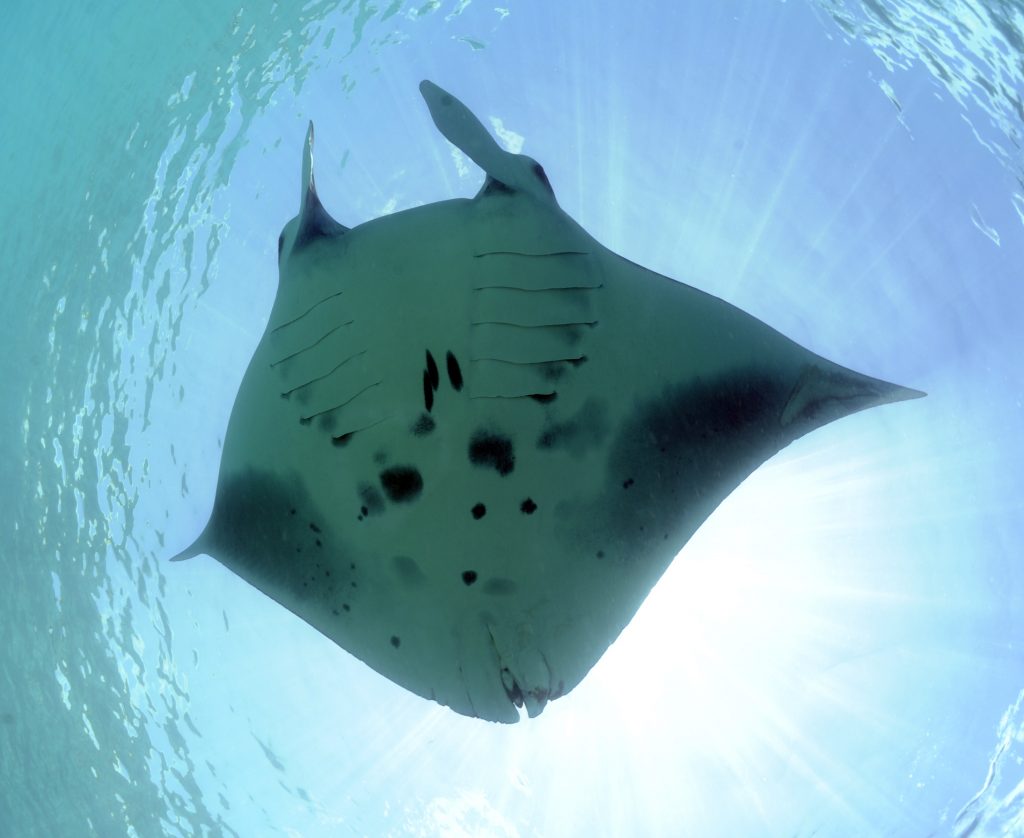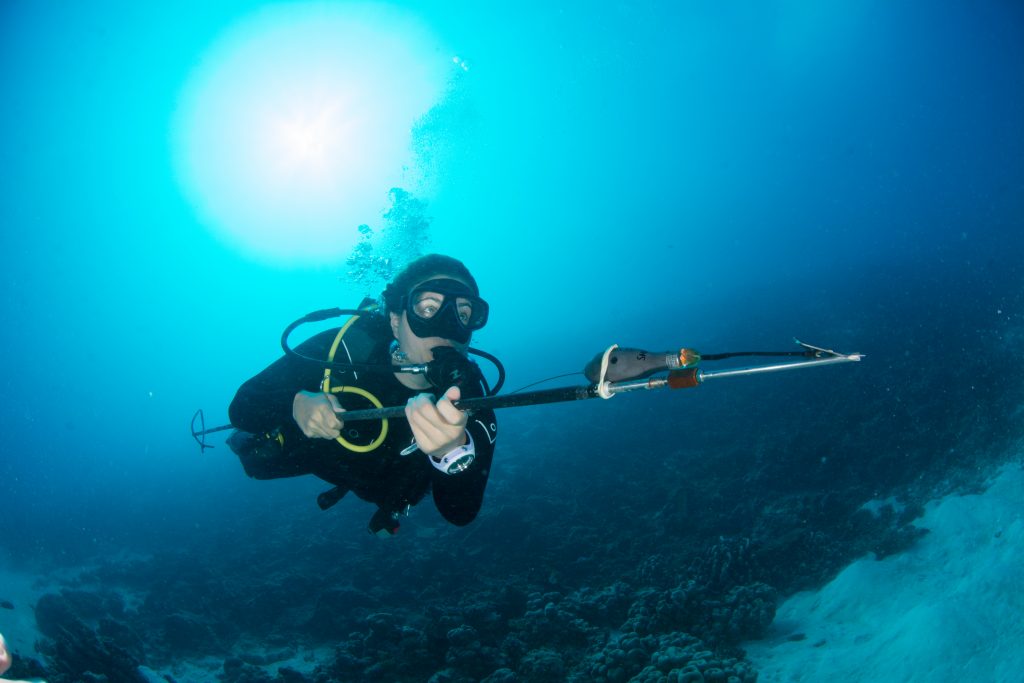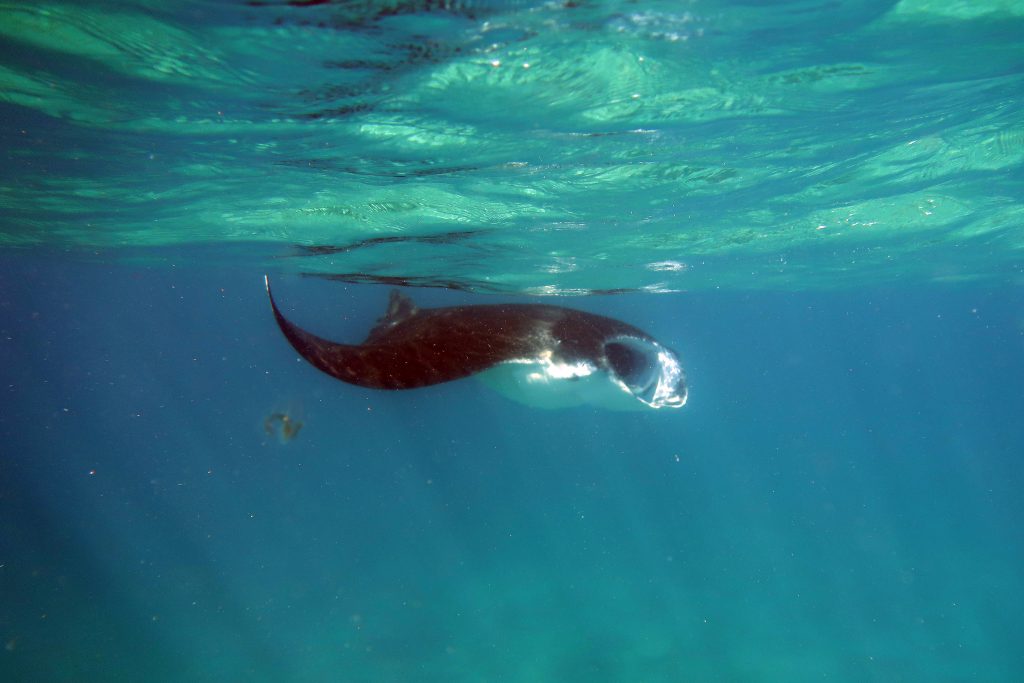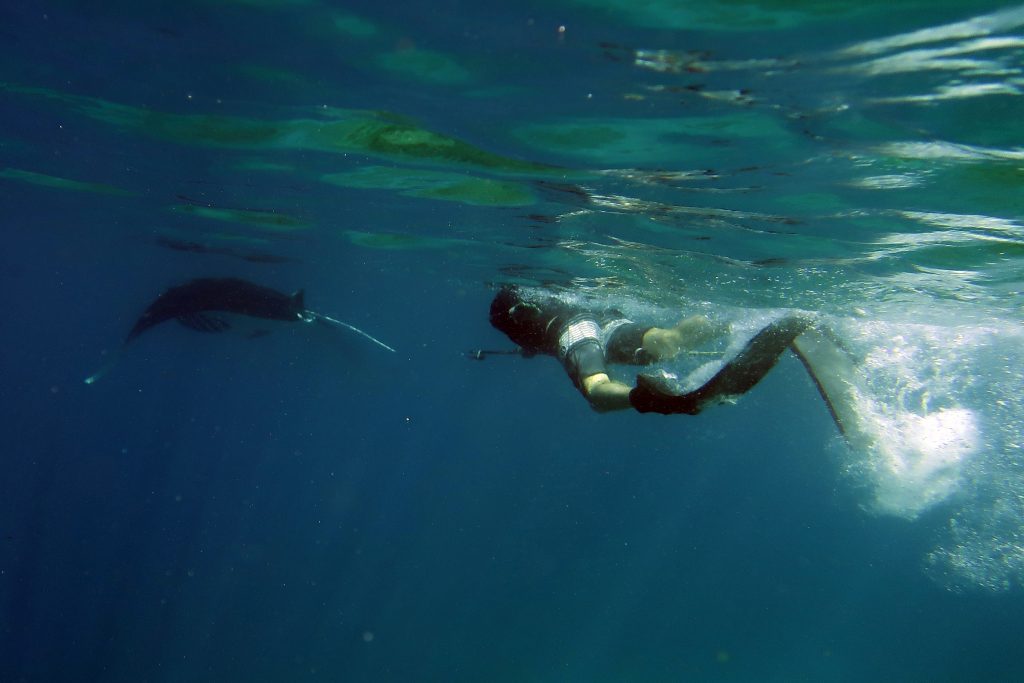When The Plan doesn’t quite go to plan: The trials and tribulations of tagging Mantas
Part I
This month, the Seychelles Manta Ray Project Team at the D’Arros Research Centre had three satellite tags to deploy on manta rays and we were beyond excited to get them in the water. These tags provide critical information about how widely reef manta rays are travelling throughout Seychelles and after successfully deploying the first two tags on females in the region last year, we couldn’t wait to deploy our new ones and see where the next mantas would take us.

Manta ray #0077 (Medusa) was the second female reef manta ray to be satellite tagged at D’Arros Island as part of this research. Photo © Guy Stevens | Save Our Seas Foundation.
On day one of the 2017 fieldtrip, the team sat down to discuss our tagging strategy for the month and we decided that we would target two mature males and a mature female at the manta cleaning station just north of the island. Previously collected tracking data had suggested that larger individuals travel further from D’Arros Island more frequently than juveniles and would therefore be most likely to reveal the full extent of the species distribution from D’Arros, and the cleaning station would provide the ideal opportunity for us to approach near-stationary mantas to deploy the tags; all we had to do was wait for the mantas to come to us. It seemed simple enough!
With lots of manta activity being observed at the cleaning station and the same plan working perfectly last year, we began our manta dives and waited for the right individuals to arrive. Day after day, we would take our tags down to the reef and they would sit eagerly on the sand. Calibrated, ready and waiting…and waiting…and waiting. Before we knew it, we were half way through November and still had all three tags with us. Not ideal; we were now rarely seeing mantas at the cleaning station as the cold, green waters of the south-east monsoon continued to remain around the island. We realised quickly that we needed a new plan.

Project Leader Lauren Peel readies a satellite tag at the cleaning station, waiting for the right manta to arrive. Photo by Ryan Daly | © Save Our Seas Foundation
Despite seeing very few mantas on our dives, our island surveys were turning out to be highly productive with feeding events being witnessed daily and numerous large mantas seen cruising at the surface through patches of plankton. Dr Ryan Daly, Research Director of Save Our Seas Foundation’s D’Arros Research Centre and Supervisor for the Project, suggested that we attempt to deploy the tags on the feeding individuals rather than those cleaning at the station. Although it is a more difficult process, we were at least encountering mantas worthy of tagging at the surface, so we decided that we would go for it. Ryan would deploy the first two tags in this way, and I would continue to wait for a mature female at the cleaning station. This would be my first satellite tag deployment, and the cleaning station provided a much more controlled environment for tagging.

Mouth wide open, this manta ray is feeding on plankton at the surface in waters off of D’Arros Island. Photo by Lauren Peel | © Save Our Seas Foundation
On November 17th Plan B was tested, and two mature male mantas left D’Arros Island with newly deployed satellite tags. Ryan had done a fantastic job and the team was ecstatic! We were certain that we would encounter a large female for the last tag at the cleaning station within the next few days; surely the forecasted change in wind direction would increase the manta activity? We returned back to the lab with big smiles on our faces after a successful day in the field, and overnight, the wind most certainly changed…
Stay tuned for Part II

[Image 4 – Dr Ryan Daly approaches manta ray #0044 [Pinguino] with a satellite tag in hand, and successfully deploys in moments later. Photo by Lauren Peel | © Save Our Seas Foundation
